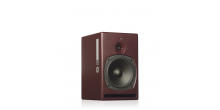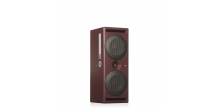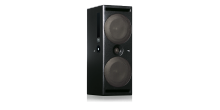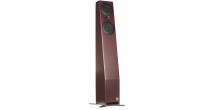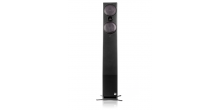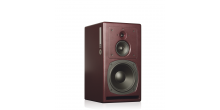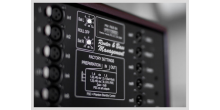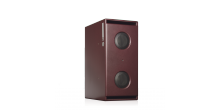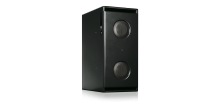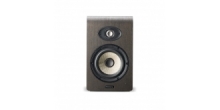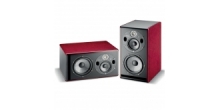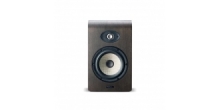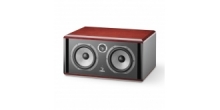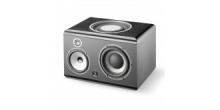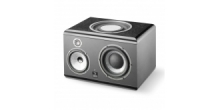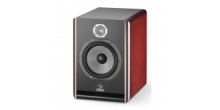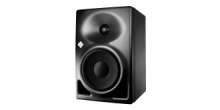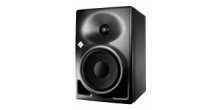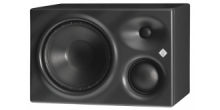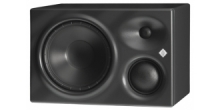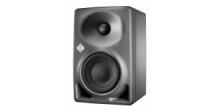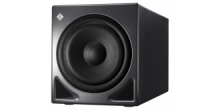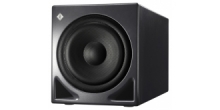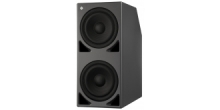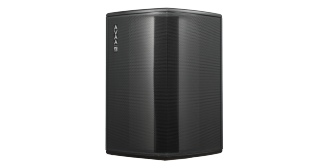 Agrandir l'image
Agrandir l'image
- It is an efficient solution for room mode problems in low frequencies
- It works independently from any source of sound and doesn't alter it
- It is stable with no settings or measurements required
- It can be used in recording room, control room, listening room or any room that has low frequency problems
- It simply works like an acoustical element in the room
- It can be turned ON and OFF to alter the acoustic environment
- It can easily be moved into different rooms
- It doesn't emit any sound
- It has a small footprint and is a cost effective solution
- It is 100% analog - no DSP, no latency
| Box Material | MDF |
| Net Weight | 13 Kg |
| Voltage | 115/230V±10%(50-60Hz) |
| Mean / Max Humidity | < 75% / < 90% |
| External Temperature | 5 - 40 °C |
PSIA9581B0
Nouveau
PSI - AVAA C20 (Active Bass Trap)

AVAA – Active Velocity Acoustic Absorber
Key points:
- The AVAA absorbs room modes between 15 and 150 Hz
- 2 AVAAs will make a significant difference in normal sized studios
- 4 AVAAs will allow to achieve even better results in large studios
- Adequate AVAA positioning is easily achieved after a few trials
- No setting are required only ON/OFF
What does the AVAA do?
The AVAA is a solution for room mode problems.
The AVAA is designed to absorb the standing modes between 15 and 150 Hz in a room. It will do so just like passive absorbers but in a much more efficient way and using up much less space. Each operating AVAA will have the same effect as a hole in the wall much larger than the dimensions of the AVAA (that is 0.2 m2). The exact ratio will depend on the frequency and environment but typically range between 5 and 20.
The AVAA will affect the impedance of the air and “suck” low frequencies around it.
Therefore the best position to place an AVAA is in the most rigid corners as that is where all room modes will be most present.
It is important to work on the positioning of loudspeakers and listening, as the AVAA will have little effect on inevitable first reflections.
How does it work?
A microphone will measure the acoustic pressure in front of an acoustic resistance.
The acoustic resistance is designed to let air through but reducing significantly the pressure.
Behind the acoustic resistance, a transducer membrane is driven to absorb the volume of air going through the acoustic resistance as well as ensuring a specific acoustic impedance in front of this acoustic resistance.
When in function, this acoustic impedance in front of the acoustic resistance is significantly lower than in ambient air and therefore acts as a pressure sink.
The acoustic impedance of the air is affected typically over a radius of 1 to 1.5 m around the AVAA. This explains how the AVAA can be more absorbent that its actual surface of perfect absorber.
It is designed to absorb frequencies between15 and 150 Hz and is most effective on room modes that are the result of multiple reflections.
What does the AVAA not do?
The AVAA is a solution for room modes below 150 Hz and absorbs low frequencies only. It is therefore not a total solution for acoustically bad rooms. For best results, it needs to be combined with passive absorption in higher frequencies.
The AVAA will only absorb pressure waves within a radius of 1 to 1.5 m around it in these frequencies. It is therefore not a solution for the first reflections a room might have. Correct positioning of speakers and listening position in the room remains necessary.
What effect will the AVAA have in my room?
The AVAA will have the same effect, on frequencies from 15 to 150 Hz, as opening a window about 5 to 20 times the size of the AVAA. This will impact sound in the time, frequency and space dimensions.
- Time: it will significantly reduce reverberation time in these frequencies especially on room modes.
- Frequency: with more precise and tighter bass, the masking effect of higher frequencies is reduced. Details in higher frequencies also become clearer.
- Space: with less indirect sound in the room, the location of the sound is more accurate making the sound image more precise.
How many AVAAs do I need?
2 AVAA will have a significant effect in most rooms.
Depending on the dimension and type of room as well as the result required, between 2 and 4 AVAAs are necessary for most normal size rooms (20 and 80 m2)
For very small rooms a minimum of two AVAAs is still recommended to have a symmetrical effect.
For larger rooms please consult an acoustician or PSI Audio directly.
Where to place the AVAAs in a room?
The most effective position for the AVAA is in a location where the walls contribute most to the room modes that are disturbing in the listening position. In practice it is very easy to position the AVAA effectively after a few comparative trials.
The starting position is in corners behind the source speakers as this is the most effective position in a majority of cases. However, depending on the structure of the room boundaries and listening position, other AVAA locations might turn out to be more effective. Try positioning them in different corner or against walls and evaluate effectiveness.
In practice it is quick and easy finding the best location by following the basic rules:
- AVAAs positioned in corners are more effective
- AVAAs located against rigid walls are more effective
Bear in mind that the AVAA is designed to absorb long wavelengths and therefore there is little very little to gain by positioning the AVAA with great precision.
Positioning the AVAAs based on measurements:
A more technical 2 step process can also be used to identify the best location for the AVAAs.
1 – Identify the disturbing room modes:
Assuming the loudspeakers and listening position have been set, measure the frequency decay time in the listening position.
Note that the most disturbing room modes are the ones with the longest extinction time and not necessarily the peaks and nulls that are the result of inevitable first reflections. You may typically identify 3 to 6 modes.
2 – Identify the highest pressure zones for each problematic room mode:
Play a sinus wave at the frequency of each disturbing room mode.
For each of these frequencies, walk around the walls of the room and note down the highest-pressure areas. You can do this with a sound level meter or listening with a single ear.
As a result you should have a map of your room highlighting the wall areas most contributing to each disturbing room mode. This will clearly show the best location for the AVAAs.
What are the advantages of the AVAA?
- It is an efficient solution for room mode problems
- It is stable with no settings required
- It can be turned ON and OFF to alter the acoustic environment
- It can easily be moved into a different room
Web content composed with the free online HTML editor. Please purchase a membership to remove promotional messages like this.
Features And Specs
- It is an efficient solution for room mode problems in low frequencies
- It works independently from any source of sound and doesn't alter it
- It is stable with no settings or measurements required
- It can be used in recording room, control room, listening room or any room that has low frequency problems
- It simply works like an acoustical element in the room
- It can be turned ON and OFF to alter the acoustic environment
- It can easily be moved into different rooms
- It doesn't emit any sound
- It has a small footprint and is a cost effective solution
- It is 100% analog - no DSP, no latency
| Box Material | MDF |
| Net Weight | 13 Kg |
| Voltage | 115/230V±10%(50-60Hz) |
| Mean / Max Humidity | < 75% / < 90% |
| External Temperature | 5 - 40 °C |





